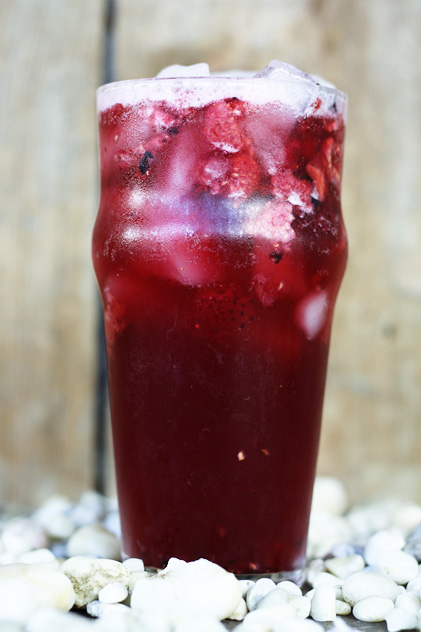Our year-round hot and humid temperatures leave us thirsty and in desperate need for a refreshing boost most of the day. The country is thankfully blessed with various traditional fruits and recipes to quench our thirst and boost our immune system with nutritious elements.
Most Sudanese homes welcome traditional juices during the holy fasting month of Ramadan, but why stop at that? There is an abundance of the raw materials year round; available and affordable for most people. Instead of grabbing a fizzy drink from the corner store, make your own cold and faintly sweetened drink at home and carry it in a glass or stainless steel bottle to reenergize at home, work or university. Even if you’re unable to make your own, luckily most of these drinks are served chilled in market kiosks and restaurants.
Here are our top traditional Sudanese drinks in all their glory.
Hibiscus
Its classic dark velvety red color and biting taste warrant its international popularity. Served with crushed ice or in a steaming pot of water, it’s always a treat. It has numerous benefits, most notably maintaining normal body temperature and heart health and promoting proper circulation to help normalize blood pressure.
We recommend that you mix it with fresh guava juice– it’ll be a little tangy but sufficiently sweetened and ready to be devoured with crushed ice.

Image Credit: surlespasdalice.com
Sweet-Sour/Hilo Murr
This mysterious dark brown drink starts off as fermented maize, herbs and spices that are mixed, compressed into thin sheets and dried out before packaging. The making of Hilo Murr is incredibly complex and requires skill, ability to accurately time processes and a hunch for measuring ingredients to come up with that intense, flavorful and heavily scented drink. Women begin by placing maize seeds over burlap and watering it for a few days until it blooms. The maize is then dried, ground and mixed with specific amounts of flour and spices such as cinnamon, ginger and even hibiscus, then cooked over high heat and spread into thin sheets.
The preparation is simple; soak the sheets in water, refrigerate for a few hours, pass through a sieve and add sugar to your liking. Hilo Murr is famous for quenching thirst and is a common drink in Sudanese homes all over the globe.
Gongolez (Tabaldi/Baobab)
The famous baobab tree, common in old and contemporary fables and books is the source of this tantalizing drink. The gongolez fruit is also commonly found in Sudanese homes as a snack or candy and known for its sharp sour taste. Lately, you can even find it in large supermarkets packaged into compact powder candy snacks. Gongolez is a reputable super-food because it’s full of anti-oxidants, calcium and vitamins.
Aradaib (Tamarind)
Although popular around the globe, the Sudanese Aradaib doesn’t taste anything like the Tamarind in other countries. Nonetheless, the benefits are the same; a glass of Aradaib will replenish your body with magnesium and phosphorus among other elements. Many argue that the powerful citric taste is the key for cleansing the digestive tract and many use it for this specific purpose. You can still get a concentrated dose of the fruit’s nutritional punch by chewing on the raw pods packaged as candy and widely available in large supermarkets.
